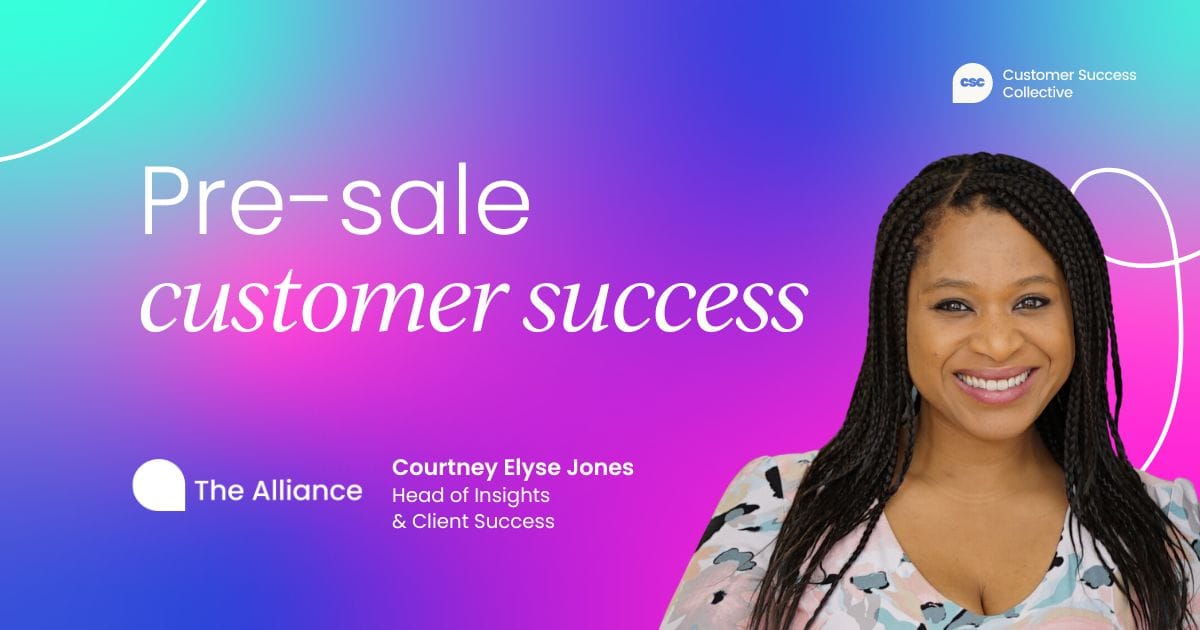This article was based on Kevin's keynote presentation at Chief Customer Officer Summit London 2023.
We’re currently witnessing a seismic shift in customer success. Traditional metrics like churn reduction and expansion are no longer sufficient when customer expectations are skyrocketing and market dynamics are more volatile than ever.
Chief Customer Officers (CCOs) must pivot from an inside-out, company-centric approach to an outside-in, customer-centric strategy. But this is no minor adjustment – it's a fundamental reimagining of how we define and drive customer success.
Let’s get this out straight off the bat – I've been doing this for a really long time. I've worked in customer success long before the pandemic, and even before the term “SaaS” existed. As a result, I know firsthand the urgent need for this transformation.
In this article, we'll explore why CCOs need to radically rethink their approach to customer success, and how they can lead their organizations to thrive in this new paradigm.
The shifting mindset in customer success
I've been responsible for go-to-market at three different companies, not just in customer success, but also marketing and sales. This experience has given me a somewhat unique perspective as to how customer success is viewed by the broader team, by the board, and by investors.
When I decided to join Brightflag, they were originally looking for a VP of Sales. While I'm responsible for sales, I'm not a VP of Sales. I’ll be totally honest, that's not a job that I would enjoy doing!
VP has kind of morphed into what's typically called Chief Revenue Officer. The last thing that I said to the co-founders before I agreed to join was “I want the title to be Chief Customer Officer”, because revenue follows customer success, right?
If you optimize for revenue, then you're not actually going to get customer success, and you're going to hit a ceiling.
Customer goals vs. expansion
So, what's the goal of customer success? The number one answer that I hear when I ask this question is that the goal of customer success is to reduce churn and increase expansion. But I think that's the wrong mindset.
In my view, the primary goal of customer success is to help customers achieve their goals. If you do that, then they're going to renew, they're going to expand their use of the product, right?
Churn and expansion are symptoms of the behaviors of customer success organizations. If we have the right behaviors, if we have the right mindset, then we will ultimately address the churn and expansion symptoms.
This might seem like a subtle distinction, but it's a crucial mindset shift. When we focus solely on churn and expansion, we're prioritizing our needs over our customers'. Instead, we need to adopt an outside-in perspective, asking ourselves:
- What is the customer trying to achieve?
- How can we guide them to that outcome?
Embracing outside-in thinking
What I'm talking about here is a shift from an “inside-out” perspective where you're thinking about:
- What will reduce churn?
- What will increase expansion?
- What will decrease risk and move customers from red to amber to green?
Instead, we should be thinking from the outside in:
- What is the customer trying to achieve?
Let's forget for a moment about how much they pay us, how much risk they might be at, and where they are in the renewal cycle, and focus on delivering those outcomes.
The importance of behavior management
Everyone should want to be judged on results, not on intentions. You don't want to be the person who said, "Hey, you know, I worked really hard to keep this customer, and it just didn't happen. But I think that I still deserve a pat on the back."
Can you see the challenge with this? You can't manage results or go to someone as a leader or as a people manager and say, "Just renew the customer" like it can magically happen. Even saying something along the lines of “Well, just make sure that the customer gets what they want." It doesn’t work like that in the real world.
You have to manage the behaviors that will lead to the results. This conundrum, this tension, is a really important thing to keep in mind and then actively manage.
We need to focus on the behaviors that lead to those desired results. This means understanding the customer's journey, identifying the key milestones they need to hit, and then aligning our actions to guide them along that path.
Mapping and operationalizing the customer journey
Okay, let’s strip things right back to basics: How do you help customers to achieve their goals?
The way that I think about it, and the way that we think about it at Brightflag, is by guiding them through the customer journey. That, to me, is the ultimate role of customer success.
Defining the customer journey from the customer's perspective
Let's look at the outside-in customer journey. Instead of thinking through the customer journey functionally in terms of internal growth, revenue, and advocacy goals, we can instead think about the customer journey from the customer's perspective.
Brightflag is software to help corporate legal departments manage their engagements with law firms. One of the things that we know customers are looking to achieve by becoming Brightflag customers is to effectively control spending by adopting the right approach to budgeting.
We think about the customer journey through the lens of what the customer is trying to achieve and the outcome that they're trying to deliver in these stages:
- Stage 1: This happens right after they go live, is that we want to set budgets for the largest project. We want to have that happen by the end of the first month, by day 30.
- Stage 2: Continue that work to cover the next largest project.
- Stage 3: By the end of the first quarter of there being a customer, you have budgets for all of the projects.
- Stage 4: Now you've got all the budgets in place, let's work to start refining that.
This approach gives us a clear, customer-centric view of success: how effectively can we help them achieve their goals?
Creating a measurable, stage-based journey
How can we operationalize this way of thinking? We create a matrix that shows where customers should be at each stage of their journey and where they actually are. This allows us to quickly identify which customers are on track and which ones might need additional support.
If a customer is supposed to be at stage one and they're at stage one, good. If they're supposed to be at Stage Three and they're actually at Stage Four, even better.
But if they're supposed to be at Stage Three and they're at Stage Two, that customer is in question about health. And if they're supposed to be at Stage Four and they're at Stage One, that customer is in really bad health.
By operationalizing the customer journey in this way, we gain several advantages:
- Clear expectations: Both our team and the customer know what success looks like at each stage.
- Early warning system: We can quickly identify when a customer is falling behind and take proactive measures.
- Tailored interventions: Understanding where a customer is struggling allows us to provide targeted support.
- Measurable progress: We can quantify how well we're helping customers achieve their goals, rather than relying on vague sentiment scores.
The three pillars of customer success
In my view, there are three ingredients to success:
1. Customers need to have ambition to improve
How many times have you had a customer that has signed up with all the enthusiasm in the world and sales tells you this customer is really excited to get going, and then you're in the kickoff call, or shortly after, and the customer says:
"Yeah, we're not changing that. We're not changing that. Actually, we're really happy with everything that we're doing right now."
2. You also need great software
It needs to be easy to use. It needs to be easy to administer. There's often a tension between ease of use and configurability – figure out where your product sits on this spectrum and orient your CS initiatives accordingly.
3. Be the customer’s guide
Even if they've got the ambition to improve, and even if the software is really easy to use, they’re still not experts in your software, even after five years of tenure.
So customers need a guide. No matter how easy your software is to use, no matter how experienced they are, they need a guide. They need a team of people who are single-mindedly focused on making them successful, using your software to achieve their goals.
At Brightflag, we've structured our CS team to provide this guidance effectively. We have four key functions:
- Customer Success Managers: They act as trusted guides, helping customers look around corners and execute their plans.
- Support team: They respond to help center inquiries, providing day-to-day assistance.
- Professional Services team: They handle customer onboarding, ensuring a smooth start to the customer journey.
- Customer Insights team: This team distills best practices from across our customer base, feeding valuable information back to all other teams, including sales, marketing, and product.
Essential advice for Chief Customer Officers
These are my top three pieces of advice for CCOs, or if you're aspiring to become one:
1. Become fluent in finance
Finance is the language of business. This has always been true, but it's especially true post-2022 market correction, where growth at all costs is no longer the story. Money is much harder to come by. Unit economics are driving valuation almost as much as growth.
When you are going into next year's planning you really need to understand the profit and loss (P&L) inside and out.
What does this mean for us? It means we need to understand our P&L inside and out.
When you're planning for the next year, don't just ask for more people. Understand how sales forecasts for different types of customers will impact your capacity needs. Look for investments that can change the unit economics of customer success, allowing your team to handle more logos or revenue more efficiently.
2. Own outcomes and eliminate excuses
We need to eliminate phrases like "We did everything we could" or "It was out of our control" from our vocabulary entirely. There are a few reasons for that.
The first one, the most important one, is they're almost never true.
Every single time in my career that I had said something like, "Oh, you know, we did everything that we could. I did everything that I could, or the team did everything that they could to keep this customer" almost every single time, a short time later, sometimes an hour later, a week later, a month later, I thought to myself, that wasn't true.
I always thought of a few things that we could have done differently.
Owning outcomes means taking responsibility for both successes and failures. It means constantly asking yourself and your team, "What could we have done differently?" Even when external factors play a role, there's always something we can learn and improve upon.
3. Learn from escalations
Escalations are a gift. I'm not gonna say something crazy, like “I love escalations” because let’s be real no one loves escalations, and if they say they do they’re lying!
But every single time a customer escalates something to me, and it doesn't happen very often, we do a deep retrospective, and every single time, we learn important things about what we're doing well, what we're missing, and how we need to change.
When an escalation occurs, don't shy away from it or delegate it. Be involved personally. It shows leadership by example, and as the CCO, you have a broader context than anyone else on your team. You'll be able to make connections that others might miss.
To wrap up, here are a few takeaways:
- Adopt an outside-in mindset. That is the most important change, in my view.
- Define the customer journey. Trust that you are an expert in your domain, that your team is a group of experts in the domain, and that you can figure out what that golden path looks like and then operationalize it and drive customers through it.
- Be that trusted guide. Don't assume that they're just going to figure it out, or that messaging is sufficient. You need a human to do this.
And for Chief Customer Officers:
- Become fluent in finance. It's the Language of Business.
- Own the outcome every time.
- Learn from escalations.
Let’s look at the state of the world and the market we’re in today. Economics are as crucial as growth, and customer expectations are higher than ever, our role as customer success leaders has never been more important.
When you embrace these mindset shifts and strategies, you can elevate your teams, customers, and entire organizations to new heights of success.



 Follow us on LinkedIn
Follow us on LinkedIn










